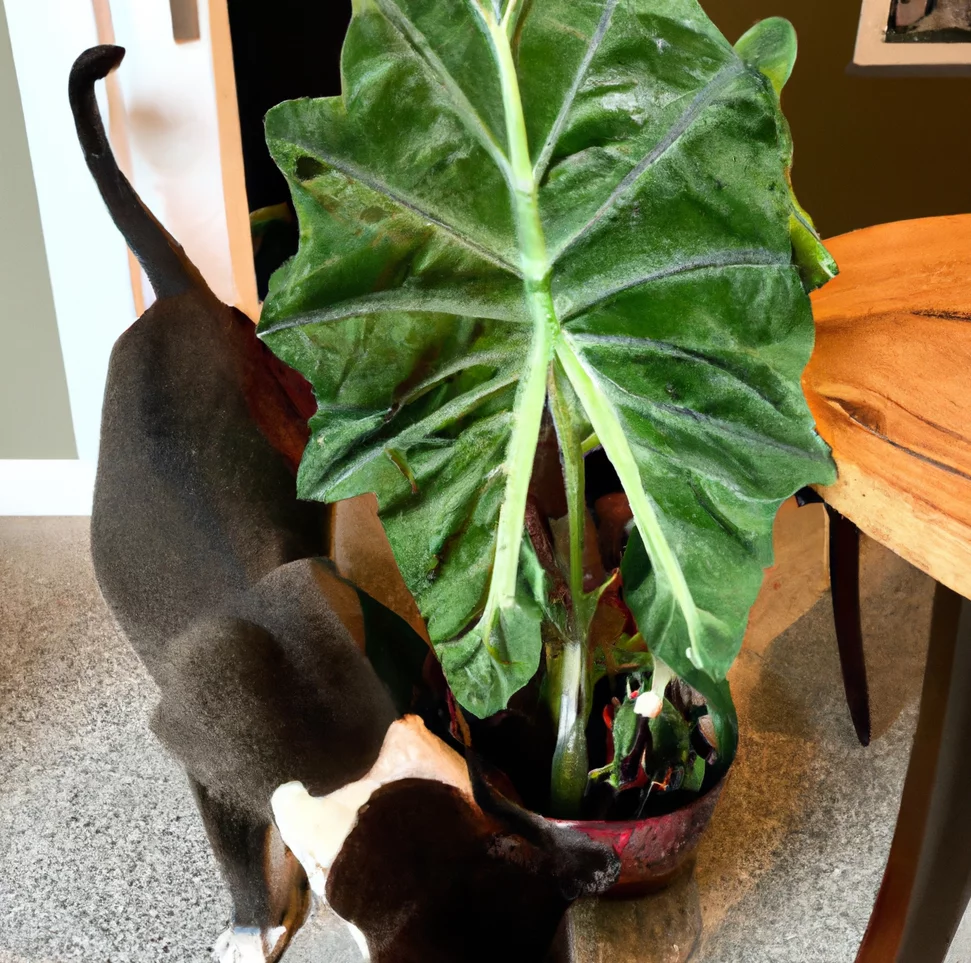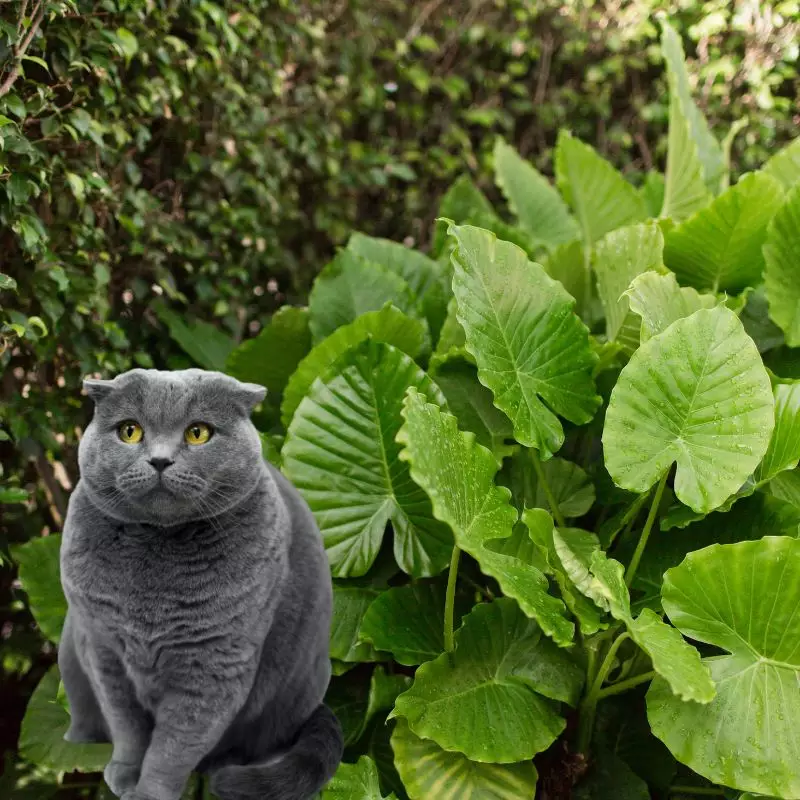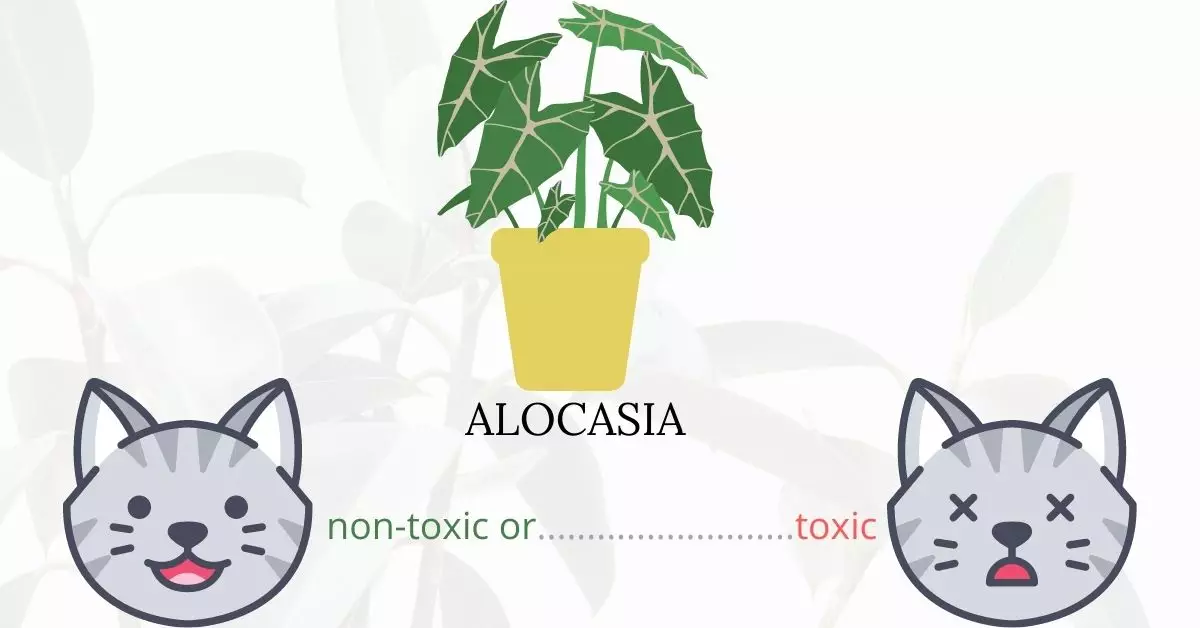Absolutely, Alocasia, commonly known as Elephant’s Ear, is toxic to cats. When cats chew on this plant, they are exposed to insoluble oxalate crystals. These crystals penetrate the oral mucosa and pharynx, leading to intense pain, burning sensations, and in some cases, swelling of the airway which can cause difficulty in breathing. It is crucial for cat owners to be aware of these dangers.
This article has been crafted in collaboration with a team of experienced DVMs (doctors of veterinary medicine). Their expertise ensures that we provide accurate and up-to-date information regarding the potential risks various plants pose to cats. Furthermore, to uphold our commitment to accuracy, our findings have been cross-referenced with high-authority websites such as ASPCA and PetMD.
Clinical Signs Of Elephant Ear Poisoning In Cats

When cats come into contact with, or ingest the Elephant Ear plant, they might display specific symptoms related to the plant’s toxins. Here’s a breakdown of the common signs, the reasons behind them, and their causative agents:
- Oral Pain: This is caused by the insoluble oxalate crystals present in the plant. Once ingested or chewed, these crystals penetrate the cat’s oral mucosa, leading to immediate discomfort.
- Acute Burning: The oxalate crystals cause a sharp, burning sensation in the mouth, which can be distressing for the cat.
- Drooling: Due to the pain and burning sensations, cats often drool excessively as a reflexive response to help flush out the irritant.
- Pawing at Face or Mouth: This is a clear indication of distress and discomfort. Cats instinctively try to remove or soothe what’s causing the pain, hence the pawing.
- Vomiting: Ingestion of the plant can upset the cat’s stomach due to the body’s natural reaction to expel the toxic substance.
- Loss of Appetite: The discomfort and pain in the mouth can deter cats from eating.
- Swelling of Mouth, Tongue, and Lips: This inflammatory response is due to the body’s reaction to the oxalate crystals, leading to tissue inflammation and swelling.
- Unable to Swallow: The swelling and irritation in the mouth and throat can hinder the cat’s ability to swallow.
- Difficulty in Breathing: In severe cases, the swelling can extend to the airway, causing an obstruction and leading to breathing difficulties.
It’s important for cat owners to recognize that while the symptoms of Elephant Ear ingestion may appear alarming, most instances are mild. However, if your cat exhibits any of these signs, it’s crucial to consult with a veterinarian to ensure the best care.
First Aid And Treatment

Any remaining residue of the plant must be flushed out from the mouth of your cat. Once removed, offer milk, yogurt or any source of calcium as this will dissolve some of the calcium oxalate crystals thus, will help in easing the pain. Should your cat show any signs of swelling and difficulty in breathing, call your veterinarian for proper treatment.
Symptomatic veterinary treatment may include removing the plant from the mouth, medications to reduce vomiting, hydration therapy, painkillers, and, in rare situations, managing airway blockages. The veterinarian might keep your cat under observation in the veterinary office once your cat’s airway is blocked due to swelling.
Recovery of Elephant’s Ear Poisoning in Cats

In most cases, cats who have severe symptoms from ingesting an elephant’s ear experience sickness that may last up to two weeks. Nonetheless, most of the severe symptoms normally pass within 24 hours.
Prevention
To prevent your cat from accidentally ingesting alocasia or elephant’s ears, the best and only way is to avoid growing this plant in your homes. Kittens are more prone to swallowing alocasia as they are curious by nature.
It is also important to be familiar with the physical appearance of an elephant’s ear so you can be more aware of this plant growing around your area. If your neighbor has an elephant’s ear, better be cautious and let your cat stay indoors as much as possible.
If you love plants but have cats at home, check out these lists:





